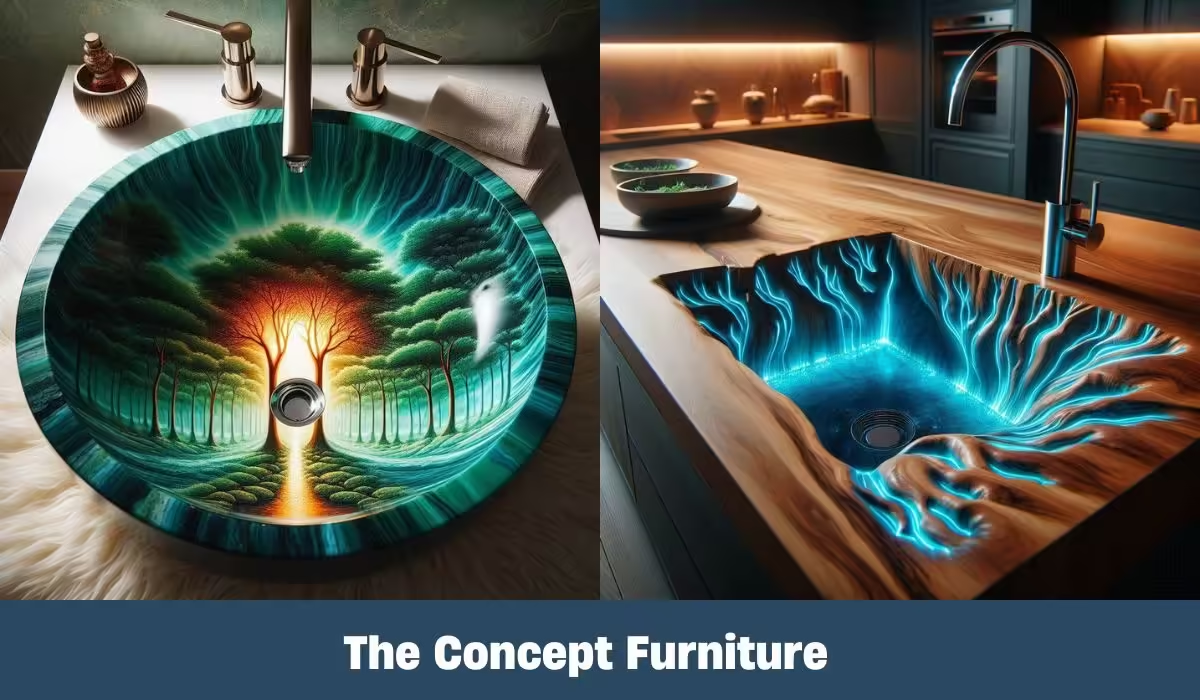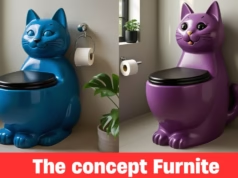Epoxy nature sinks have emerged as a captivating trend in modern interior design, combining natural elements with the functional benefits of epoxy resin. This unique fusion allows homeowners to create stunning focal points in kitchens and bathrooms while also enjoying durable and easy-to-maintain surfaces. As we delve into the intricacies of epoxy nature sinks, we will explore their definition, composition, advantages, design possibilities, installation processes, maintenance, common misconceptions, comparisons with other sink materials, unique features, customization options, uses in different settings, cost considerations, eco-friendliness, and trends. By the end of this article, you will have a comprehensive understanding of why epoxy nature sinks are becoming a sought-after choice for those looking to infuse beauty and functionality into their spaces.
Introduction to Epoxy Nature Sinks
As homeowners increasingly seek out materials that reflect a blend of artistry and practicality, epoxy nature sinks have gained significant popularity. These sinks not only serve as functional fixtures but also as works of art that can transform any kitchen or bathroom design.
Definition of Epoxy Nature Sinks
Epoxy nature sinks are handcrafted fixtures created from a combination of epoxy resin and various natural elements, such as wood, stone, and even flowers or shells. The process involves pouring clear or colored epoxy resin over these organic materials, which results in a visually stunning and often unique sink. Each piece tells a story, making it a personalized addition to any home.
The versatility of epoxy allows for a wide range of designs; whether you prefer a minimalist aesthetic or something more elaborate, there is an epoxy nature sink to suit your taste. The integration of natural materials not only enhances the visual appeal but also connects the fixture to the beauty of the outdoors, creating an inviting atmosphere in your space.
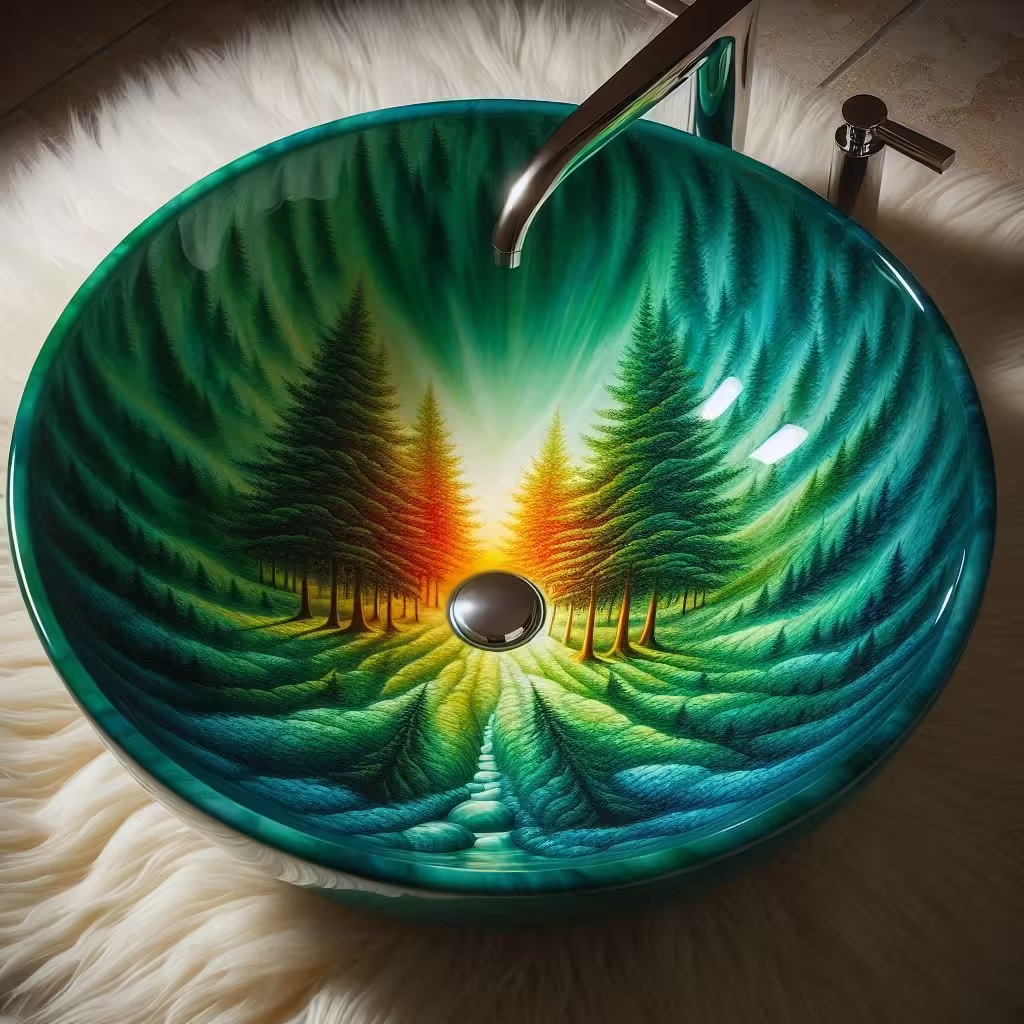
Overview of Their Popularity in Modern Design
Epoxy nature sinks have found their way into both contemporary and rustic design styles, making them a popular choice among homeowners and designers alike. Their ability to serve as a statement piece contributes to their appeal, as they effortlessly draw attention while complementing surrounding decor.
Furthermore, as sustainability becomes an increasing focus in home design, many consumers are searching for products that minimize environmental impact. Epoxy nature sinks align with this ethos by utilizing responsibly sourced materials and offering longevity, reducing the need for frequent replacements.
The Composition of Epoxy Nature Sinks
Understanding the underlying components of epoxy nature sinks is essential to appreciating their value.
Understanding Epoxy Resin
Epoxy resin is a versatile material known for its durability and resistance to moisture and chemicals. It consists of two main components: resin and hardener, which when mixed together, create a strong bond that becomes solid upon curing. This curing process can be manipulated to achieve different textures and finishes, allowing artisans to create sinks that are not only beautiful but also resilient.
One of the most appealing qualities of epoxy is its variety. It comes in numerous colors, patterns, and sheens, enabling the creation of custom designs that match individual preferences. Additionally, epoxy’s smooth surface makes it easy to clean, ensuring that maintenance remains minimal over time.
Natural Elements Integrated into Epoxy
The integration of natural materials plays a crucial role in defining the character of epoxy nature sinks. Commonly used elements include live edge wood, pebbles, shells, and dried flowers. Each addition contributes to the uniqueness of the sink, ensuring that no two pieces are alike.
Live edge wood creates a rustic charm, allowing the natural contours of the wood to shine through. Stones and pebbles can add texture and earthy tones, while flowers and shells elevate the artistic aspect of the design. By incorporating such diverse elements, epoxy nature sinks embody a connection to nature, fostering a calming and harmonious environment.
Advantages of Epoxy Nature Sinks
Choosing an epoxy nature sink offers multiple benefits that extend beyond mere aesthetics.
Durability and Longevity
One of the standout features of epoxy nature sinks is their exceptional durability. The hardening process creates a dense, non-porous surface that is resistant to chipping, cracking, and fading. This means that even in high-use areas such as kitchens and bathrooms, an epoxy nature sink will withstand daily wear and tear without losing its allure.
Additionally, the water-resistant qualities of epoxy prevent the growth of mold and mildew, ensuring that your sink remains hygienic and easy to maintain. As a long-term investment, epoxy nature sinks can provide years of reliable service while retaining their original beauty.
Aesthetic Appeal and Customization Options
The artistic quality of epoxy nature sinks cannot be overstated. With the ability to incorporate a variety of natural elements and colors, homeowners can create a unique fixture that reflects their personal style. Whether you prefer a tranquil blue hue reminiscent of ocean waves or warm earthy tones that exude comfort, the options for customization are virtually limitless.
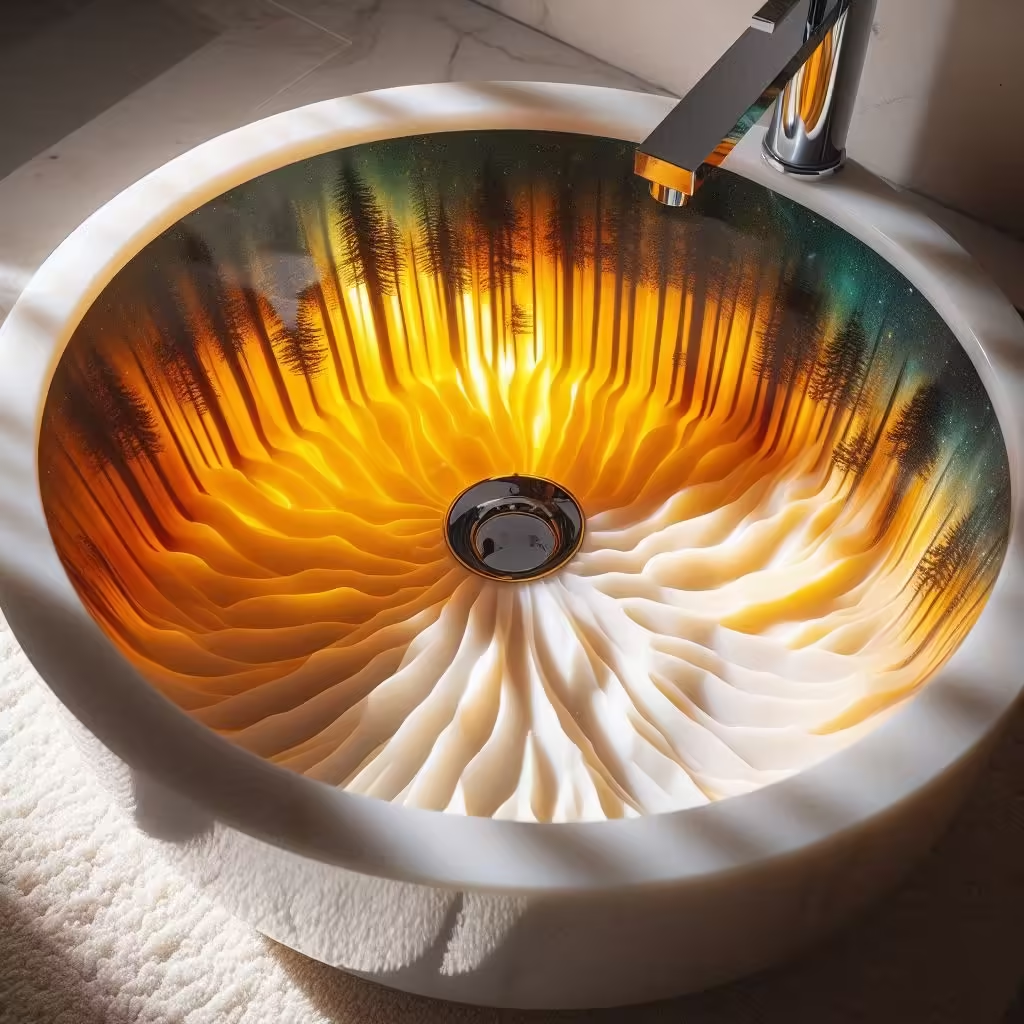
This level of personalization allows for seamless integration into any design scheme, enhancing the overall aesthetic of the space. An epoxy nature sink can serve as a stunning centerpiece, drawing admiration from guests and adding value to your home.
Resistance to Stains and Scratches
Epoxy resin also boasts remarkable resistance to stains and scratches, making it an ideal choice for busy households. Common kitchen spills like red wine, coffee, and oils won’t easily mar the surface, and light scratches can often be buffed out with minimal effort. This resilience ensures that your sink maintains its pristine look over time, even under heavy use.
Moreover, the non-porous nature of epoxy prevents bacteria from adhering to the surface, promoting a healthier environment. This combination of beauty, functionality, and hygiene is a compelling reason to consider epoxy nature sinks for your home.
Designing with Epoxy Nature Sinks
Incorporating an epoxy nature sink into your design plan requires thoughtful consideration to ensure harmony with existing decor.
Coordinating with Kitchen and Bathroom Decor
When selecting an epoxy nature sink, it’s essential to consider the overarching theme of your kitchen or bathroom. For instance, a rustic-style sink featuring live edge wood may pair beautifully with farmhouse-inspired decor, while a sleek, modern design could enhance a contemporary setting.
The size and shape of the sink should also complement the layout of the room. A large, double-basin sink might work well in a spacious kitchen, while a compact single-basin sink can be perfect for smaller bathrooms or kitchens. The goal is to create a cohesive look that feels curated and intentional.
Colors and Patterns: Finding the Right Match
Color selection is another critical aspect of designing with epoxy nature sinks. It’s crucial to choose shades that harmonize with countertops, cabinetry, and wall colors. Neutral tones offer versatility and can adapt to changes in decor over time, while bolder hues can make a striking statement.
Patterns within the epoxy can also influence the overall aesthetic. Subtle swirls or speckles can add depth without overwhelming the space, while more intricate designs can become a focal point. Consider using color swatches and samples to visualize how the sink will interact with surrounding elements before committing to a specific design.
Installation Process of Epoxy Nature Sinks
Proper installation of epoxy nature sinks is vital to ensure their longevity and functionality.
Preparing the Installation Area
Before beginning the installation process, it’s important to prepare the area where the sink will be placed. This involves measuring the space accurately to ensure a proper fit, as well as ensuring that the countertop and cabinetry are stable and level.
Clearing the area of any debris and existing fixtures will facilitate an easier installation process. Additionally, having all necessary tools and equipment on hand, such as silicone sealant, plumbing supplies, and cleaning agents, will streamline the project.
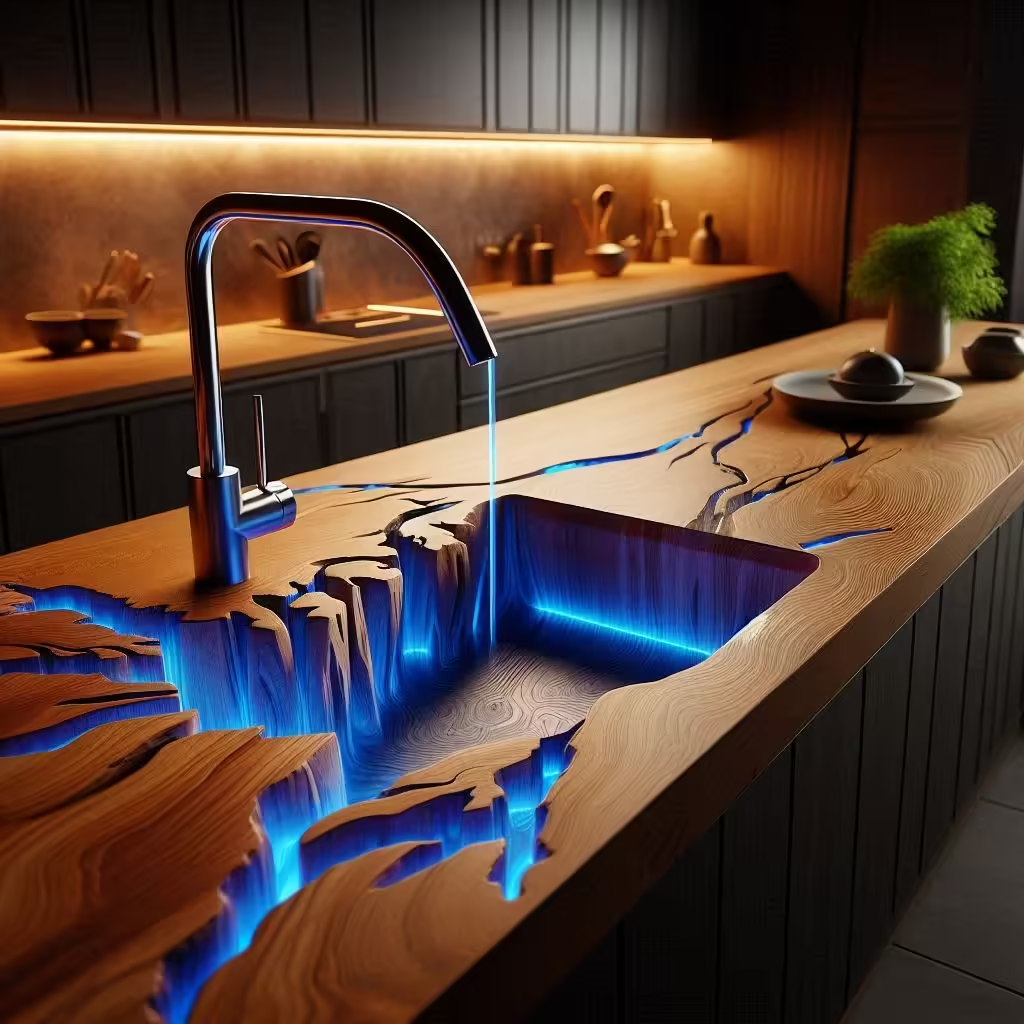
Step-by-Step Installation Guide
- Measure and Cut: Begin by marking the outline of the sink onto the countertop. Use a jigsaw to carve out the sink hole, ensuring that the edges are smooth to allow for proper sealing.
- Install the Faucet: Before placing the sink, it’s wise to install the faucet according to the manufacturer’s instructions. This ensures that everything is functional prior to securing the sink in place.
- Secure the Sink: Apply silicone sealant around the edges of the sink cutout and carefully position the sink into the hole. Ensure it is level and press down firmly to create a strong seal.
- Connect Plumbing: Once the sink is secure, connect the plumbing according to standard procedures. Make sure to check for leaks after turning on the water supply.
- Final Touches: After the installation is complete, wipe down the sink and surrounding area to remove any excess sealant or debris, ensuring a polished final appearance.
Maintenance and Care for Epoxy Nature Sinks
To keep epoxy nature sinks looking pristine, proper care and maintenance are essential.
Cleaning Techniques and Recommended Products
Routine cleaning of epoxy nature sinks is straightforward and can typically be accomplished with mild dish soap and warm water. Avoid abrasive cleaners, as they can scratch the surface and diminish its luster. Instead, opt for soft sponges or cloths to gently wipe down the sink after each use.
For tougher stains, a mixture of baking soda and vinegar can be effective. Apply the paste to the affected area, let it sit for a few minutes, and then scrub lightly before rinsing thoroughly.
Long-term Care Tips for Sustainability
Long-term care of epoxy nature sinks revolves around preventing damage and prolonging life. To prevent scratching, avoid cutting directly on the sink surface and use cutting boards instead. Regularly check for any signs of wear or damage, especially around faucet installations or sinks that experience heavy usage.
Consider applying a wax or polish specifically designed for epoxy to enhance its shine and provide an added layer of protection. This can help maintain the aesthetic appeal of the sink while ensuring it remains functional for years to come.
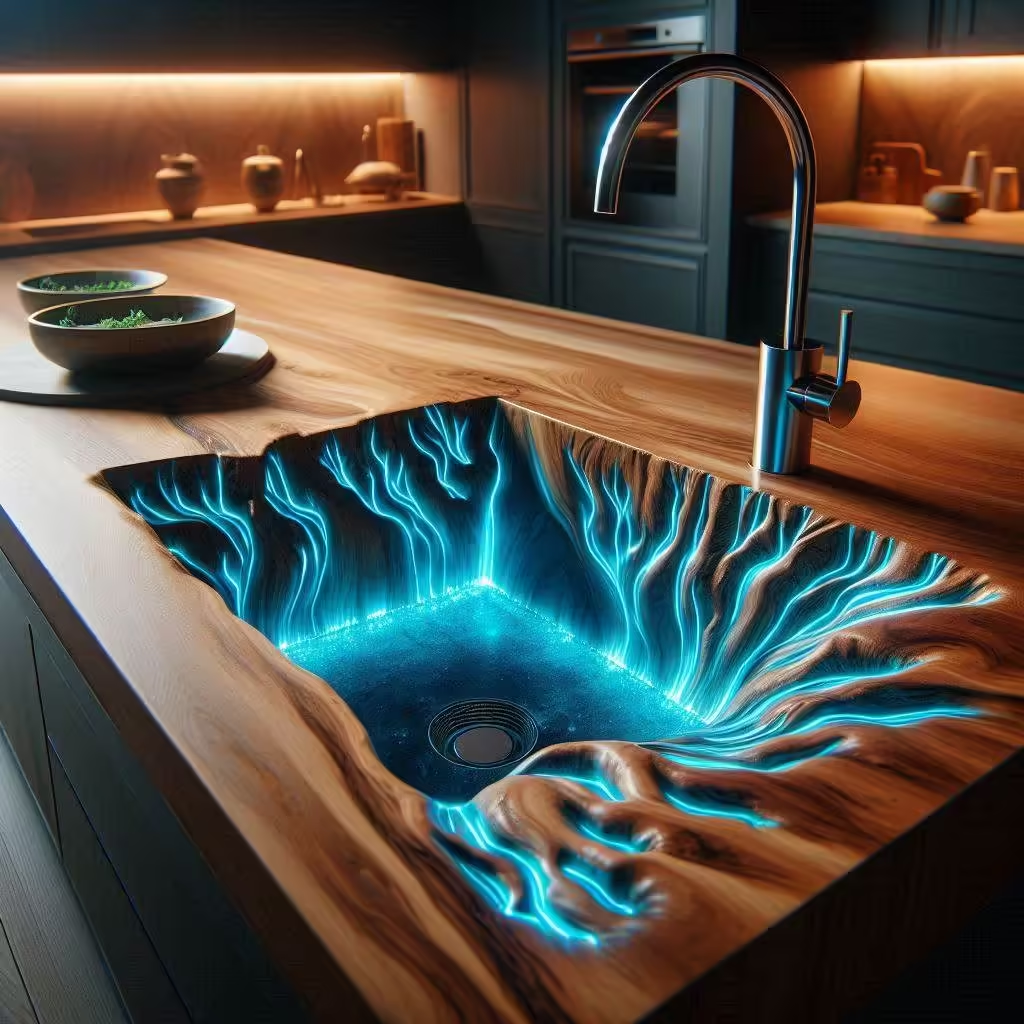
Common Misconceptions about Epoxy Nature Sinks
Despite their growing popularity, several misconceptions surround epoxy nature sinks that can deter potential buyers.
Myths vs. Facts
One common myth is that epoxy nature sinks are prone to discoloration or degradation over time. In reality, high-quality epoxy resins are designed to resist UV light and maintain their vibrancy, provided they are cared for correctly.
Another misconception is about their weight and installation requirements. While some believe that epoxy sinks are excessively heavy, they are often lighter than traditional stone sinks, making installation feasible for most countertops with appropriate support.
Addressing Concerns About Environmental Impact
As concerns about environmental sustainability rise, some individuals worry that epoxy nature sinks may contribute negatively to the planet. However, many manufacturers now utilize eco-friendly practices, sourcing materials responsibly and ensuring recyclability at the end of their lifespan. Additionally, the longevity of epoxy nature sinks means fewer replacements over time, ultimately reducing waste.
Comparisons with Other Sink Materials
Evaluating epoxy nature sinks alongside other materials helps elucidate their distinct advantages.
Epoxy Nature Sinks vs. Stainless Steel
While stainless steel sinks are renowned for their durability and commercial appeal, they often lack the aesthetic warmth that epoxy nature sinks provide. Stainless steel can also show scratches and fingerprints more readily, requiring regular polishing to maintain a pristine appearance.
Epoxy nature sinks, on the other hand, can be customized to feature vibrant colors and natural elements, allowing for greater artistic expression. Moreover, their resistance to staining offers an edge over stainless steel in terms of maintenance.
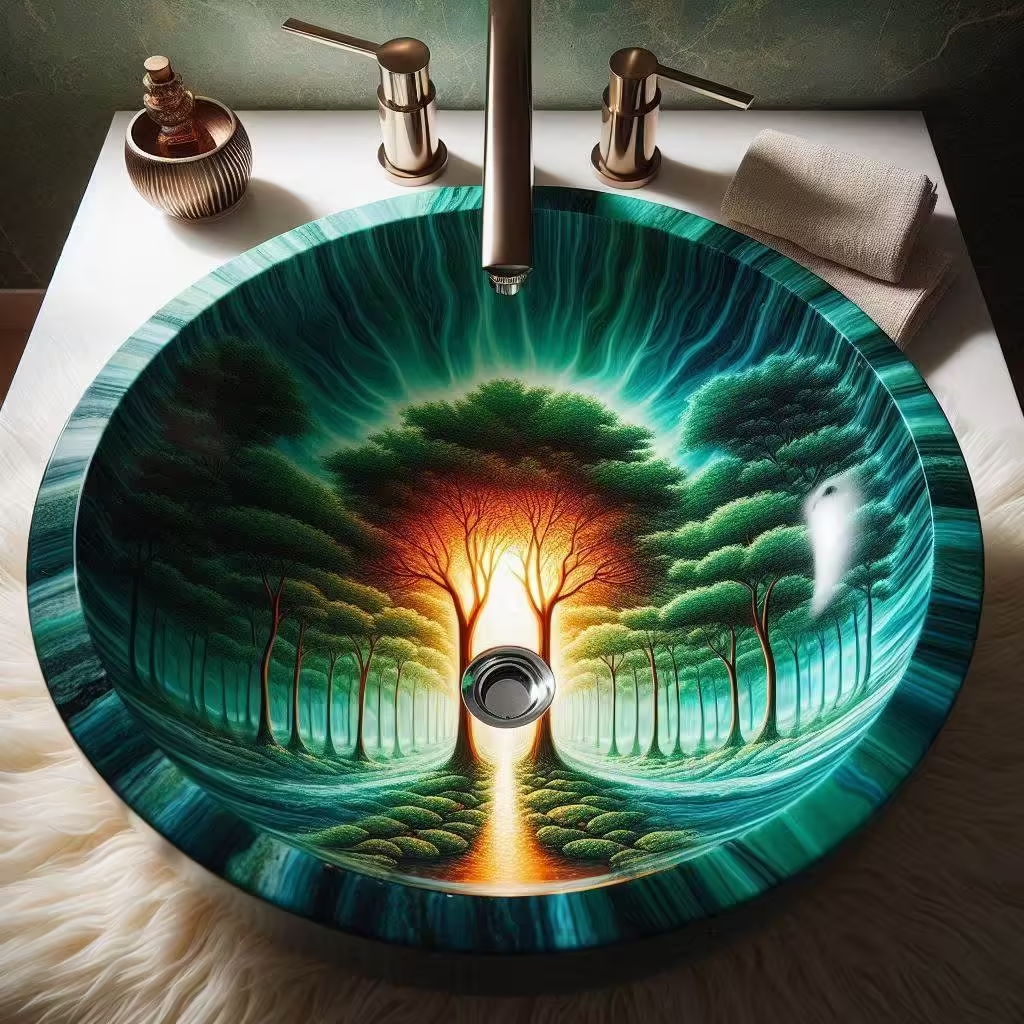
Epoxy Nature Sinks vs. Ceramic Sinks
Ceramic sinks are favored for their classic appeal and ease of cleaning but can be susceptible to chipping and cracking if subjected to heavy impact. In contrast, epoxy nature sinks boast higher resilience against damage while also providing a unique artistic quality that ceramic cannot replicate.
Although ceramic sinks come in various colors and designs, they often fall short of the customization possibilities offered by epoxy nature sinks, which can be tailored to individual tastes.
Epoxy Nature Sinks vs. Solid Surface Sinks
Solid surface sinks, composed of synthetic materials, share some similarities with epoxy sinks in terms of customization and ease of maintenance. However, solid surface materials may not incorporate the same natural elements, which can result in a less organic aesthetic.
Additionally, solid surface sinks can be more vulnerable to heat damage compared to epoxy nature sinks, which can withstand higher temperatures without compromising integrity.
Unique Features of Epoxy Nature Sinks
The artistry behind epoxy nature sinks includes several unique features that set them apart from conventional sinks.
Incorporation of Live Edge Wood
One of the most distinctive aspects of epoxy nature sinks is the incorporation of live edge wood. This technique showcases the natural lines of the wood, creating a stunning juxtaposition between organic shapes and the smooth finish of epoxy. The result is a one-of-a-kind sink that embodies a deep connection to nature.
Live edge wood not only enhances the visual appeal but also provides a tactile experience, inviting homeowners to engage with the raw beauty of the material. Each sink becomes a conversation starter, reflecting the individuality of its owner.
Adding a Waterfall Effect
Another innovative design feature is the possibility of incorporating a waterfall effect into epoxy nature sinks. This design element utilizes flowing curves and strategic layering of the epoxy to mimic the natural flow of water over rocks or stones.
The waterfall effect can transform a standard sink into a dynamic centerpiece, drawing visual interest and serving as a reminder of nature’s beauty. This feature can be particularly captivating in spa-like bathrooms or serene kitchen environments.
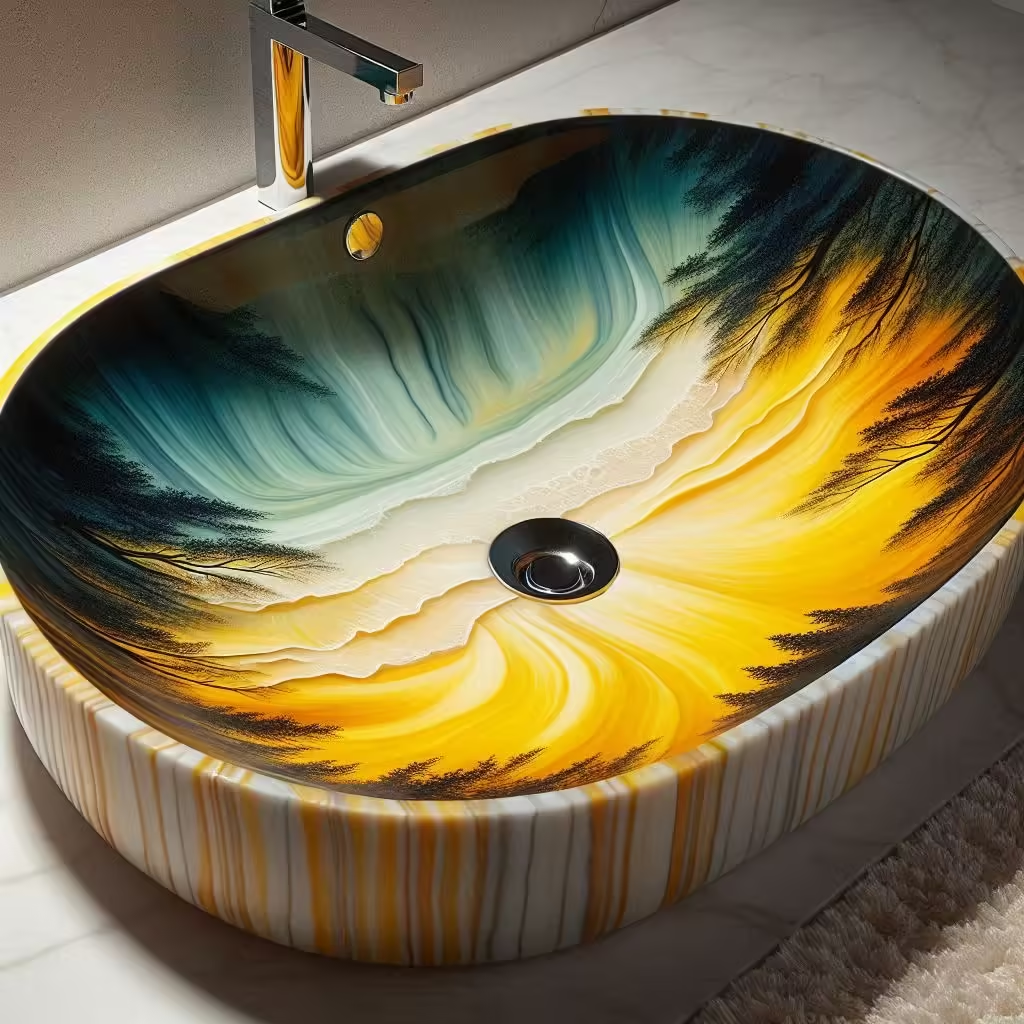
Customization Options for Epoxy Nature Sinks
Customization is a hallmark of epoxy nature sinks, providing homeowners with the opportunity to create a truly personalized fixture.
Tailoring Sizes and Shapes
Epoxy nature sinks can be crafted in various sizes and shapes to accommodate individual needs and preferences. From oversized farmhouse sinks to compact vessel options, the flexibility in sizing means that every homeowner can find a fit that suits their space.
Unique shapes can enhance certain design themes, such as organic forms that evoke a sense of nature or geometric styles that align with modern aesthetics. Custom sizing ensures that the sink seamlessly integrates into the overall design while also maximizing functionality.
Personalizing Color Combinations
Color is another area ripe for creativity in epoxy nature sinks. Homeowners can work with artisans to develop bespoke color combinations that reflect their personal style or harmonize with existing decor.
From vibrant jewel tones to muted earth shades, the palette choices are expansive, allowing for unique interpretations based on individual visions. Collaborating with skilled artisans ensures that the end product aligns perfectly with personal preferences.
Epoxy Nature Sinks in Different Settings
The versatility of epoxy nature sinks extends beyond residential use, finding application in various commercial settings as well.
Residential Use: Kitchens and Bathrooms
In residential spaces, epoxy nature sinks can breathe new life into kitchens and bathrooms. In kitchens, they can act as stunning focal points, elevating the overall ambiance while providing reliable functionality.
In bathrooms, these sinks can transform mundane spaces into luxurious retreats. The incorporation of natural elements promotes relaxation, creating an inviting atmosphere for personal wellness routines. Homeowners can enjoy the benefits of both beauty and practicality in their daily lives.
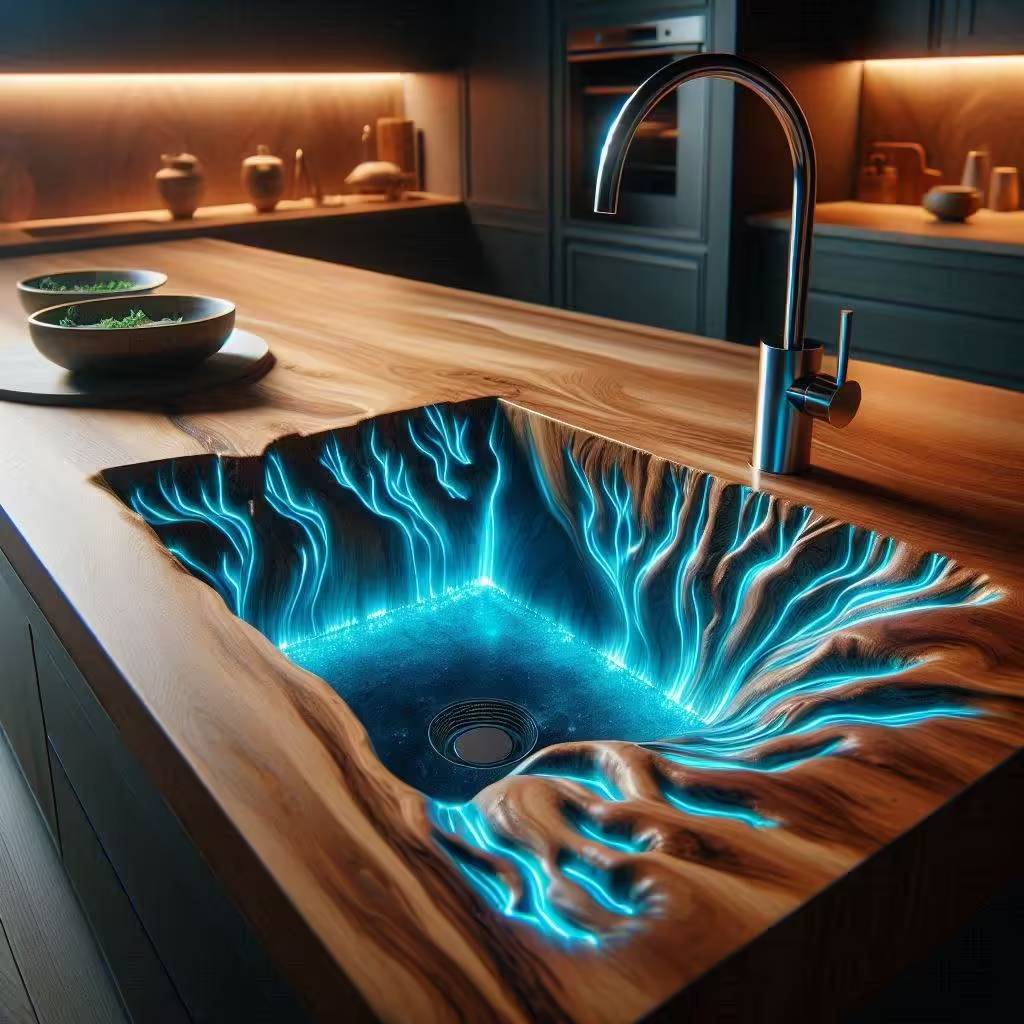
Commercial Applications: Restaurants and Offices
Epoxy nature sinks are also making waves in commercial applications, with restaurants and offices seeking to create aesthetically pleasing environments that leave a lasting impression on customers and clients alike. A well-designed sink can enhance the overall dining experience, contributing to the establishment’s brand identity.
In office settings, the trend towards biophilic design—bringing natural elements indoors—has led many workplaces to embrace epoxy nature sinks. The calming presence of organic materials can foster productivity and well-being among employees, making them an excellent choice for breakrooms and collaborative spaces.
Cost Considerations for Epoxy Nature Sinks
While the appeal of epoxy nature sinks is undeniable, potential buyers must also consider the associated costs.
Initial Investment vs. Long-Term Value
Investing in an epoxy nature sink may require a higher initial expenditure compared to traditional sink materials. However, it is essential to weigh this upfront cost against the long-term value offered by their durability and low maintenance needs.
These sinks tend to outlast cheaper alternatives, reducing the frequency of replacements and repairs. In the grand scheme, the financial savings accrued from avoiding premature replacements can justify the initial investment.
Budgeting for Installation and Accessories
Beyond the purchase price of the sink itself, potential buyers should also budget for installation and any additional accessories. This might include plumbing fixtures, connectors, and sealants.
Working with experienced professionals during installation can ensure a proper fit and reduce the risk of future issues. Investing in quality accessories can further enhance the functionality and aesthetic appeal of the sink, leading to a more satisfying overall experience.
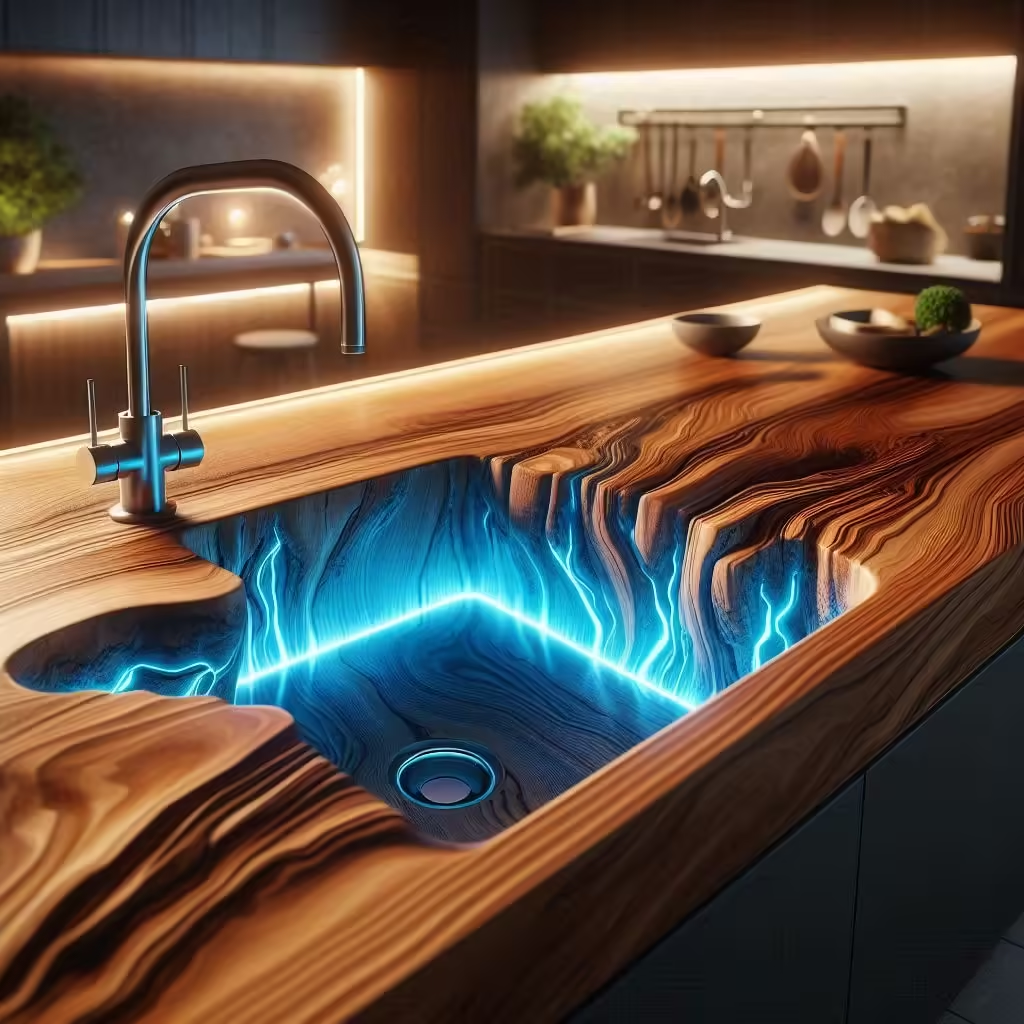
Eco-Friendly Aspects of Epoxy Nature Sinks
As sustainability continues to gain prominence in home design, epoxy nature sinks have risen to meet consumer demands for eco-friendly choices.
Sustainable Sourcing of Materials
Many artisans who create epoxy nature sinks prioritize sustainable sourcing of materials. This encompasses using reclaimed wood, responsibly harvested natural elements, and eco-conscious production methods.
By choosing these options, homeowners can feel good about their purchase, knowing they are supporting practices that promote environmental stewardship. This commitment to sustainability resonates with consumers who want their homes to reflect their values.
Recyclability and Responsible Disposal
In addition to sustainable sourcing, the recyclability of epoxy nature sinks also contributes to their eco-friendliness. When a sink reaches the end of its life cycle, many components can be repurposed or recycled, minimizing landfill contributions.
Additionally, the longevity of epoxy nature sinks helps reduce waste by decreasing the need for replacements. This aligns with a broader movement toward responsible consumption and waste reduction in our society.
Trends in Epoxy Nature Sink Design
Staying attuned to the latest trends in epoxy nature sink design can inspire homeowners and designers alike.
Innovations in Epoxy Technology
Advancements in epoxy technology are continually expanding possibilities for sink design. New formulations may enhance durability, offer improved clarity, and introduce novel applications that were previously impossible.
Artisans are experimenting with techniques that push the boundaries of traditional epoxy sinking, resulting in ever-evolving designs that challenge conventional norms. Keeping an eye on these innovations can provide insight into emerging styles and approaches.
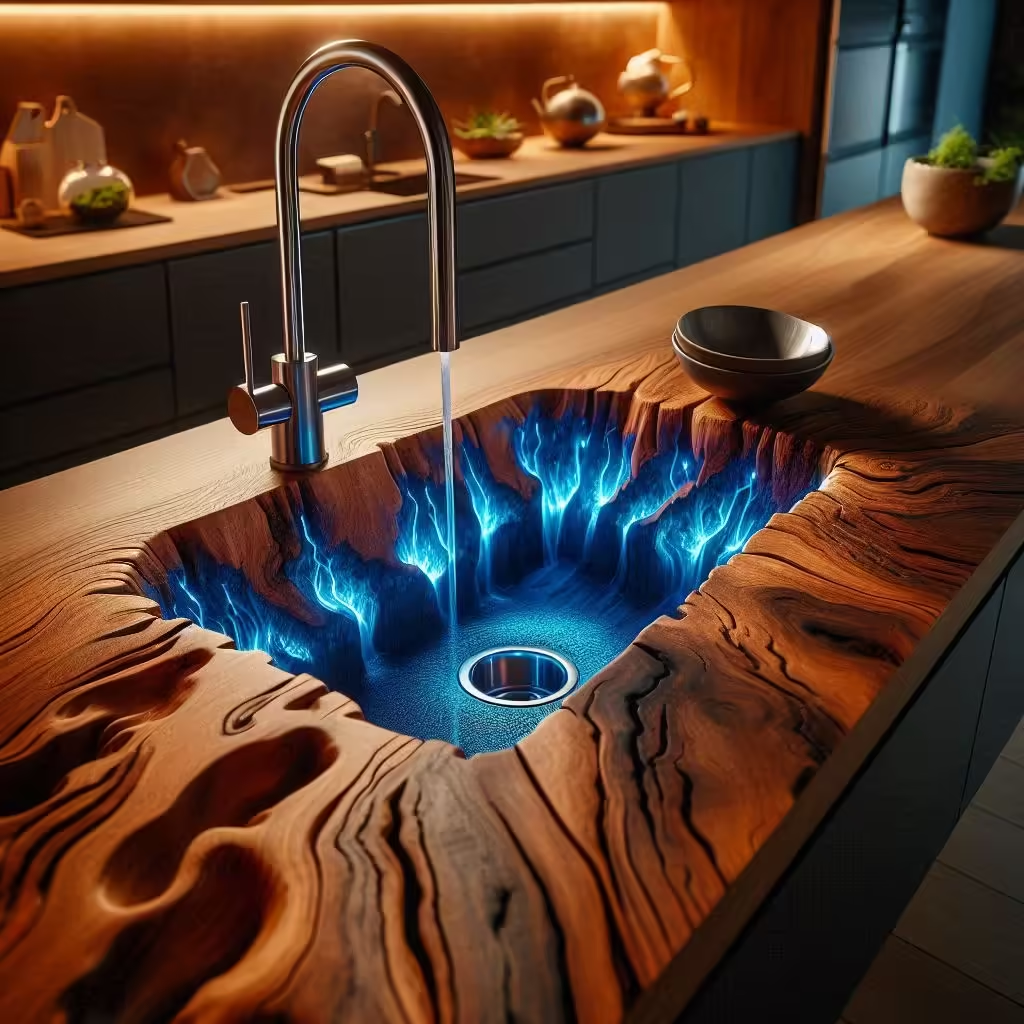
Emerging Styles in Interior Design
As interior design trends shift, so too do the designs of epoxy nature sinks. Current movements emphasize organic shapes, earthy tones, and biophilic design principles that celebrate nature.
Additionally, minimalism remains influential, leading to sleek and understated designs that allow the inherent beauty of the materials to take center stage. In a world where personalization is paramount, the adaptability of epoxy nature sinks ensures they remain relevant across various design paradigms.
Conclusion on the Benefits of Choosing Epoxy Nature Sinks
In conclusion, epoxy nature sinks represent a harmonious blend of beauty, functionality, and sustainability. Their unique composition, which marries epoxy resin with natural elements, offers homeowners a chance to express their individuality while investing in a durable and low-maintenance product.
Whether utilized in residential or commercial settings, epoxy nature sinks stand out as stunning focal points that enhance any space’s aesthetic appeal. With extensive customization options, an environmentally friendly footprint, and a reputation for longevity, it’s no wonder that epoxy nature sinks are becoming a preferred choice for discerning homeowners and businesses alike. As trends continue to evolve, these remarkable fixtures are poised to play a significant role in shaping the future of interior design.


